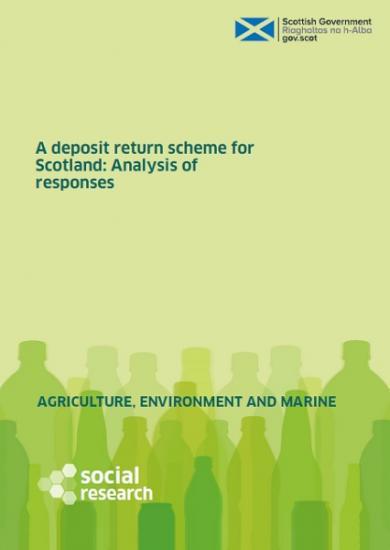Deposit Return Scheme Consultation: Analysis Of Responses - Plastic Bottles Etc
26th February 2019

Analysis of responses to the deposit return scheme for Scotland consultation.
Between 27 June and 25 September 2018, the Scottish Govenment undertook a public consultation to explore options for establishing a deposit return scheme (DRS) in Scotland.
The consultation paper, A Deposit Return Scheme for Scotland, discussed the key features of a scheme and set out different options for its operation - without putting forward a preferred option.
The analysis was based on 3,215 responses. These comprised responses from 159 organisations, 2,008 individuals and 1,048 postcard campaign respondents submitted by supporters of the Have You Got The Bottle (HYGTB) campaign.
There was widespread agreement amongst both organisational and individual respondents that a well-run and appropriately targeted DRS could provide opportunities in relation to improving the environment, changing people's attitudes to recycling and littering,
and building the circular economy. Respondents identified potential benefits (for employment, small retailers, charities and individuals) and risks (both general and specific) of establishing a DRS in Scotland, and they also suggested ways to maximise the
opportunities and mitigate the risks.
Three particular themes were raised repeatedly - by both ndividuals and organisations
- in relation to a wide range of consultation questions. These ‘cross-cutting' themes were:
Deposit return in Scotland should not be seen in isolation. Rather, it should be part of a (preferably, UK-wide) comprehensive approach to waste management, recycling and reuse.
Deposit return in Scotland should be (i) ‘easy to use' for consumers and other key stakeholders (i.e. producers, retailers, manufacturers, etc.), (ii) ‘accessible’ and ‘convenient’ for consumers (including those with disabilities, those without private transport, and those living in rural areas), and (iii) it should be ‘simple in design’, so that people can understand it and use it appropriately.
See the Full REPORT


